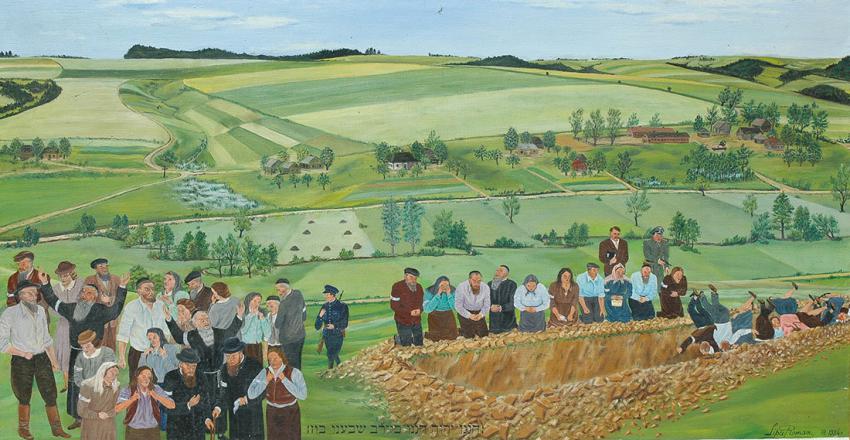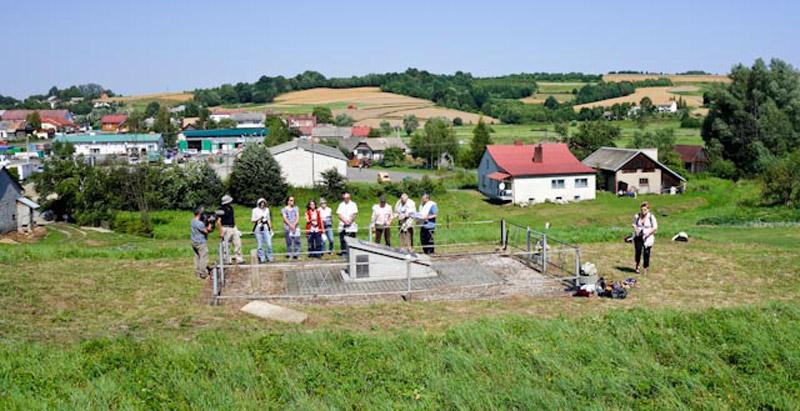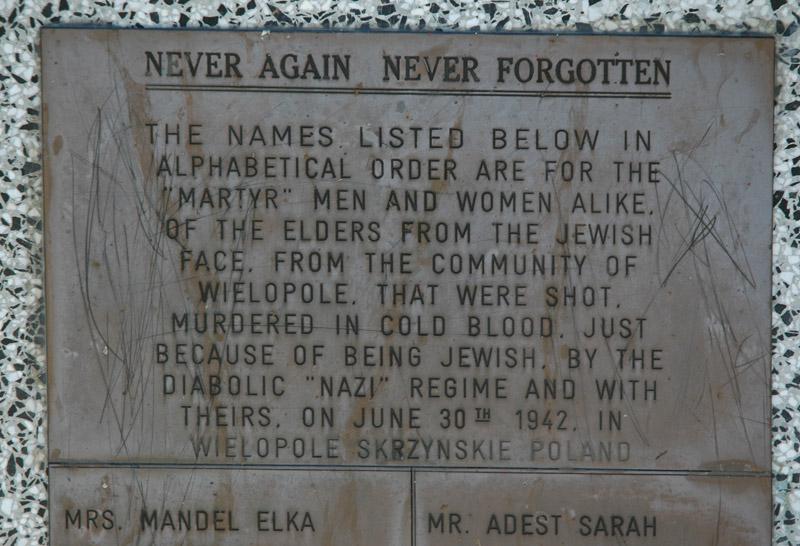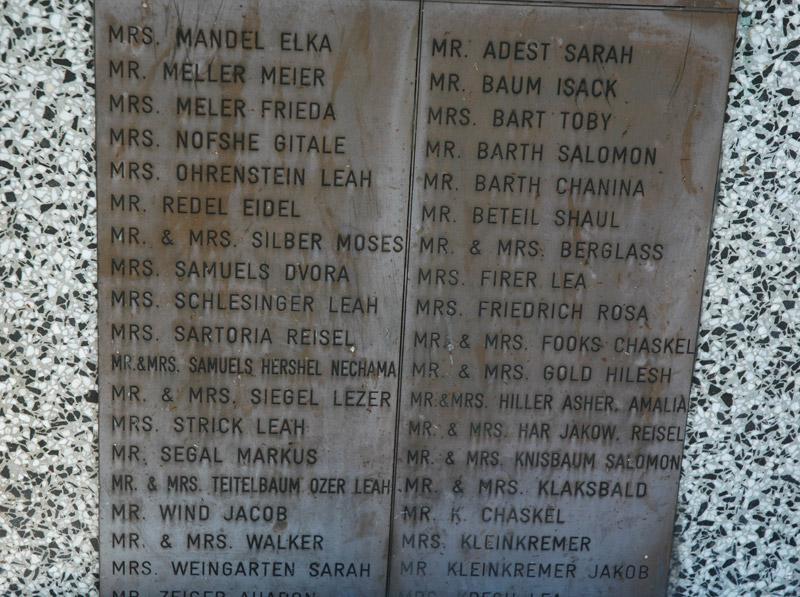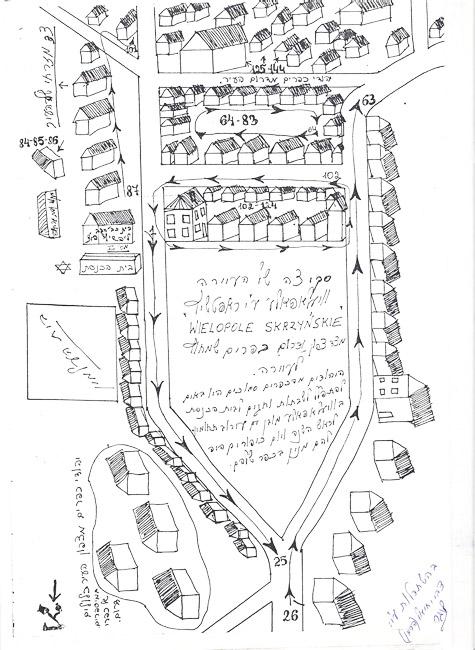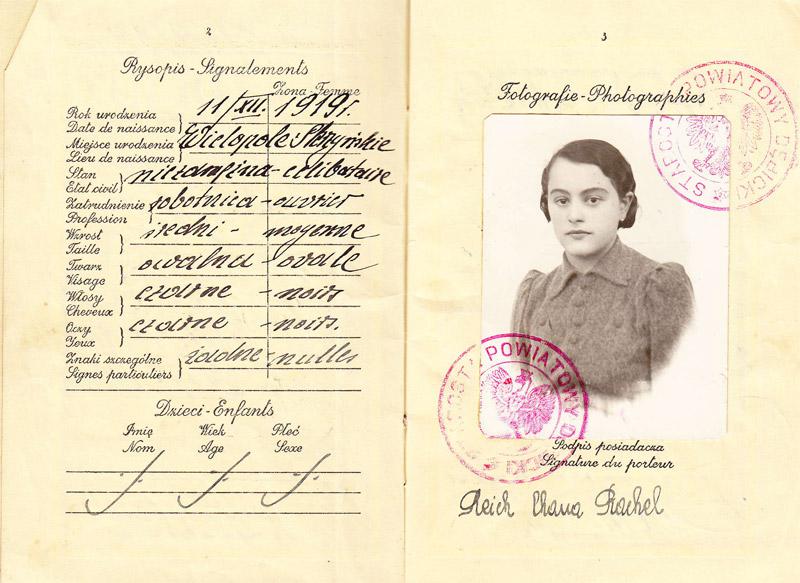In 1921, 550 Jews lived in the town of Wielopole Skrzyńskie, constituting about half of the local population. At that time, some twenty small Jewish factories were in operation there.
David Teitelbaum (1891-1972), an amateur photographer who was born in Wielopole, immigrated to the United States in the early 1900s and became a successful businessman. He would return to his hometown almost every year to visit his family, and in 1938, he filmed his trip. In June or July 1939 he traveled to Wielopole again, but only stayed for a short time, fearing that war was imminent. It is possible that some sequences of the film were filmed on that last visit. The film features members of the Teitelbaum, Rappaport and Sartoria families, their neighbors and acquaintances.
Individuals in the film have been identified by relatives, particularly Channa Rachel (Helen) Glucksman, David's niece, who lives in the US today.
The German occupation of Wielopole in September 1939 brought with it a period of decrees, persecution, forced labor conscription, robbery and murder. In the spring of 1942, the Jews were forbidden to live in certain areas of the town, and were forced to crowd into a few narrow streets. This wasn't a sealed ghetto, but the residents were subjected to severe movement restrictions. On 26 June 1942 the Jews of Wielopole Skrzyńskie were evicted and sent to the ghetto in Ropzcyce. Some fifty sick and elderly Jews were murdered before the forced departure. Some of the people who appear in the film were amongst those murdered that day.
The individuals who appear in the film include:
Oizer Teitelbaum, one of the leaders of the community, murdered in June 1942, and his wife Leah née Blattberg, who may have died of illness before the mass killing and deportation, but was possibly murdered in June 1942. Both their names are inscribed on the memorial that was established in memory of the murdered Jews in Wielopole.
Oizer and Leah had nine children:
- Reisel
- Chiel (born 1882, immigrated to the US)
- Sheindel (born 1889)
- David (born 1891)
- Chaya Klara (born 1895, immigrated to the US)
- Shaya Sam (born 1896/7, immigrated to the US)
- Gusi (born 1904)
- Yankel (immigrated to the US)
- Eliezer
David, who made the film and Chiel, who immigrated to the US and came back to visit, both appear in the film. Also in the film are their sister Reisel Sartoria née Teitelbaum, who was murdered, and her husband Moshe (fate unknown), Sheindel Rappaport (née Teitelbaum) (1889-?), and her husband Moshe Aaron (1887-?) who were both presumably murdered, but it is not known where or how.
Sheindel and Moshe Aaron's children have also been identified in the film: Simcha (1914-?), fate unknown; Chiel (1915/16-?) and Shlomo (1917-?), fate unknown; Channa Rachel (Helen) Glucksman nee Rappaport (born 1919). On his visit in 1938, David arranged for Channa's departure to the US. She left Wielopole in September or October 1938; Chaim (1921-?), fate unknown and Etla (1929-?), disappeared without a trace. Reisel and Moshe's children: Shaya (fate unknown), Chiel, Sara and her husband (name unknown).
Other people appearing in the film include: Juda Redel, Oizer and Leah's neighbor and landlord, who was murdered in June 1942, and his wife Eidel, who was Moshe Aaron Rappaport's stepsister; Nathan Lipschitz (1918-2011), the son of the town Rabbi, Yehuda Zindel Lipschitz , and grandson of the Hassidic Rabbi Yitzhak Lipschitz.
Yad Vashem Archives
Donated by Helen Gluksman and the Family of David Titelbaum

